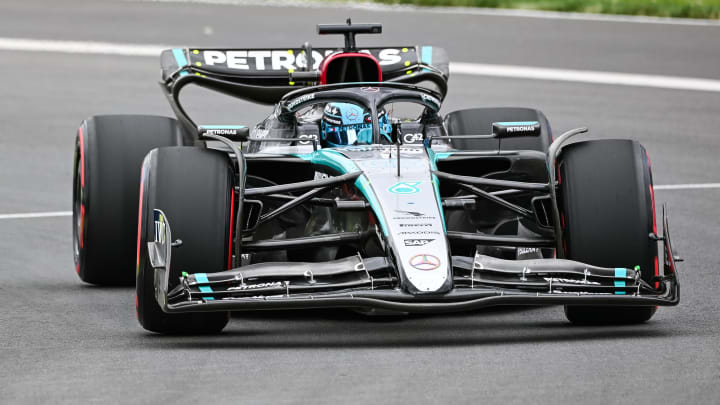F1 News: Mercedes Zeros Down On Reasons Behind George Russell's Disqualification

Mercedes has finally revealed the factors that most likely contributed to the weight loss of George Russell's W15 to the point where he didn't meet the minimum weight specification after the Belgian Grand Prix. Trackside engineering director Andrew Shovlin listed tire wear, plank wear, and Russell's weight loss as the reasons for his disqualification from the race at Spa-Francorchamps.
Despite being the first to cross the finish line, Russell received disappointing news a few hours after his victory: he was disqualified. Although his car began the race meeting the FIA's weight specifications, it finished 1.5 kilograms lighter than the prescribed minimum.
One reason for the drastic weight loss was cited as excessive tire wear, considering Russell's one-stop strategy that didn't see him with a fresh set of tires in the second half of the race. Most of the cars on the grid went with a two-stop strategy, leading them to have more rubber on their Pirellis at the end of the Grand Prix.
Tires can reportedly lose up to 1 kilogram during a single stint, which could have contributed to Russell's disqualification. However, Shovlin added that the tire wear compounded the plank wear underneath the car, causing a further drop in the weight. Not to forget that Formula 1 drivers also lose a lot of weight during a Grand Prix. Hence, a drop in Russell's weight worsened the outcome.
Speaking in Mercedes’ regular post-race debrief video, as reported by Motorsport.com, Shovlin explained that the team was looking into these factors to understand better. He said:
“[It was] obviously very disappointing and unfortunate, particularly after he'd driven such a strong race to win from so far back.
“Right now, we're trying to understand exactly what happened. A lot of that involves us getting the weights of all the different components.
“The car can lose quite a lot of weight during the race. You get tire wear, plank wear, brake wear, oil consumption. The driver themselves can lose a lot. And in this particular race, George lost quite a bit of weight.”
Shovlin confirmed that the weight of Russell's car was identical to the weight of Lewis Hamilton's W15 at the start of the race. However, the single stint could have made Russell's car lighter, but it only adds to a minute gain in performance. He added:
“In terms of pace at the start of the race, it's nil because George's car and Lewis's car start the race at the same weight.
“Now, obviously, as George's car was losing weight faster than Lewis's throughout the race, there is an associated gain with that, but you're into the hundredths of a second per lap.
“It will be very small, because when you're talking about amounts, like one or two kilos, they don't amount to a lot of lap time.”
Shovlin also revealed that the weight of both cars after the qualifying sessions was nearly the same, suggesting that a problem of this kind was not on the radar for the team. He said:
“The cars started the race the same weight.
“Lewis and George were both weighed after qualifying. The cars were within 500 grams.
“George's was the only one that had the problem, and it's because things like the tire wear was much higher. It looks like we lost more material on the plank. We'll collect all that data, though, and look at how we can refine our processes, because clearly we don't want that to happen in the future.”
